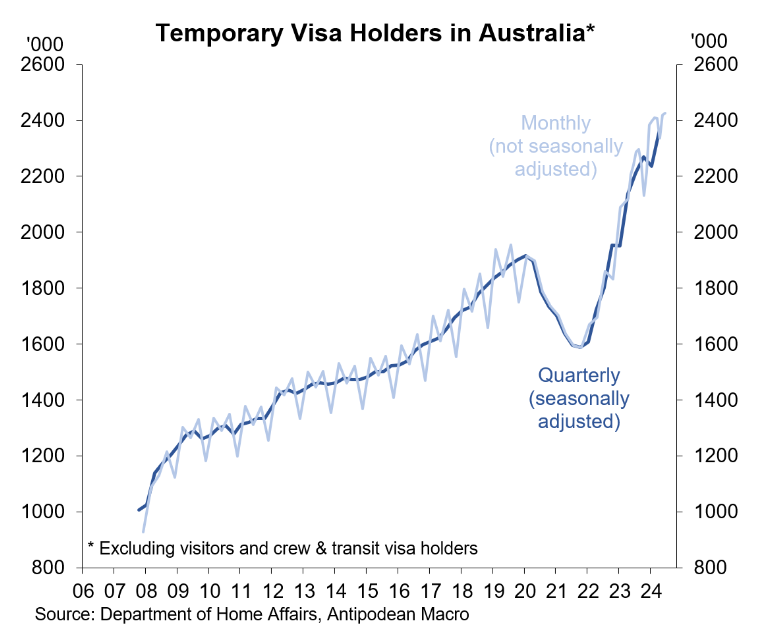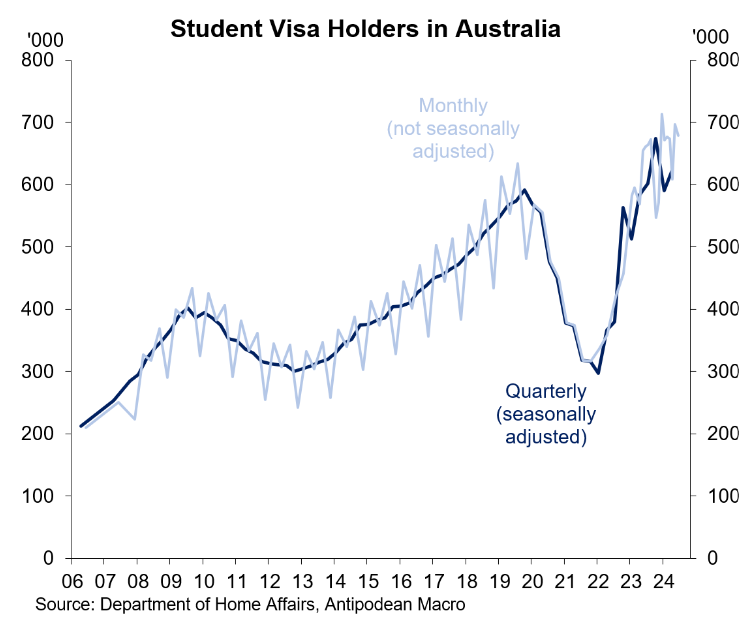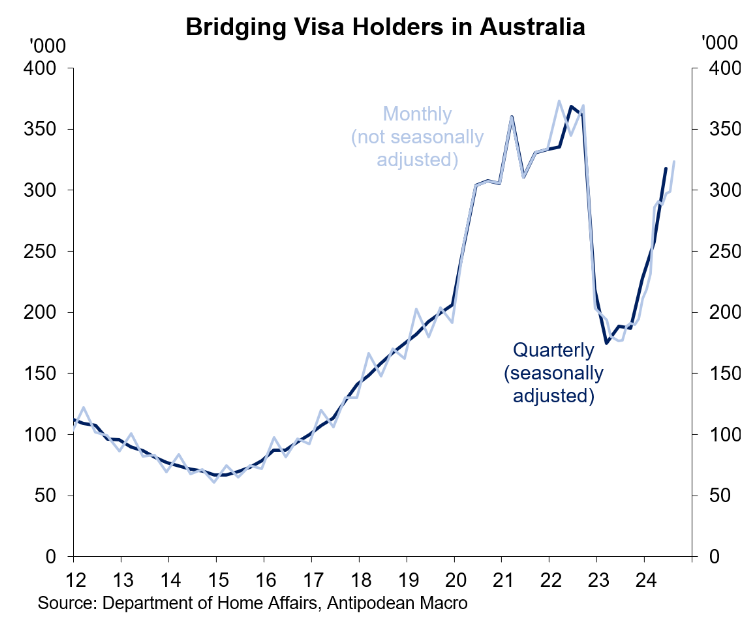The AFR this week reported that the number of temporary migrants in Australia spiked by around 100,000 in the past year, with the volume of student visas surging to an all-time high 679,293 at the end of August.
The number of temporary graduate visa holders has also jumped from 193,277 a year ago to 223,960.
This surge in temporary migrants has scuttled the Albanese government’s ‘visa crackdown’, alongside its plans to ‘halve’ migration to 260,000 this financial year.

Source: May 2024 Federal Budget
The following chart from Justin Fabo at Antipodean Macro shows the record rise in temporary visa holders:

The number of temporary student visa holders has at least flattened out in raw terms and has fallen from the peak in seasonally adjusted terms:

However, there has been a spike in students visa holders transitioning onto bridging visas, which The AFR’s Julie Hare notes is “making it difficult for the government to reach its net migration forecasts of 260,000 this financial year”.

“Bridging visa numbers spiked to 323,583 from 191,235 a year ago, as former students appealed against the cancellation of their visas or denial of applications”, Hare wrote.
“Abul Rizvi, a former deputy Immigration Department secretary, said he expected the net overseas migration figure to blow out to between 325,000 and 350,000 this financial year, based on current trends”.
Helen Duncan from the Migration Institute of Australia warned that attempts to stop visa hopping appeared to have failed.
“A lot of dodgy providers are doing what they can to recruit as many students as they can before the caps come in on 1 January”, she said.
Likewise, Phil Honeywood, chief executive of peak group International Education Association of Australia, noted that “a mad panic going on by some providers to stack their student numbers in the lead-up to caps coming into effect”.
In short, rejected student visa holders are using bridging visas to extend their stay in Australia. And this is undermining the federal government’s war on dodgy student visas by clogging the appeals process.
The government must do two things to fix the student visa system.
First, it needs to make entry into Australia far more stringent by:
- imposing stricter English-language requirements and requiring prospective students to pass entrance exams before being accepted to study in Australia;
- increasing financial requirements, with funds deposited into an escrow account before arriving in Australia (to prove that students can support themselves and are here to study, not work); and
- removing the direct link between study, work, and permanent residency.
These reforms would reduce the inflow of international students and improve overall quality. They would transform international education into a genuine export industry, would boost the quality of graduates (and productivity), and would lower net overseas migration and pressures on housing and infrastructure.
Second, the federal government must tighten the appeals process and functioning of the Administrative Appeals Tribunal to make it more difficult for rejected visa holders to shift onto a bridging visa.
Temporary visas must be temporary, and holders must be made to return home after their visas have expired.

